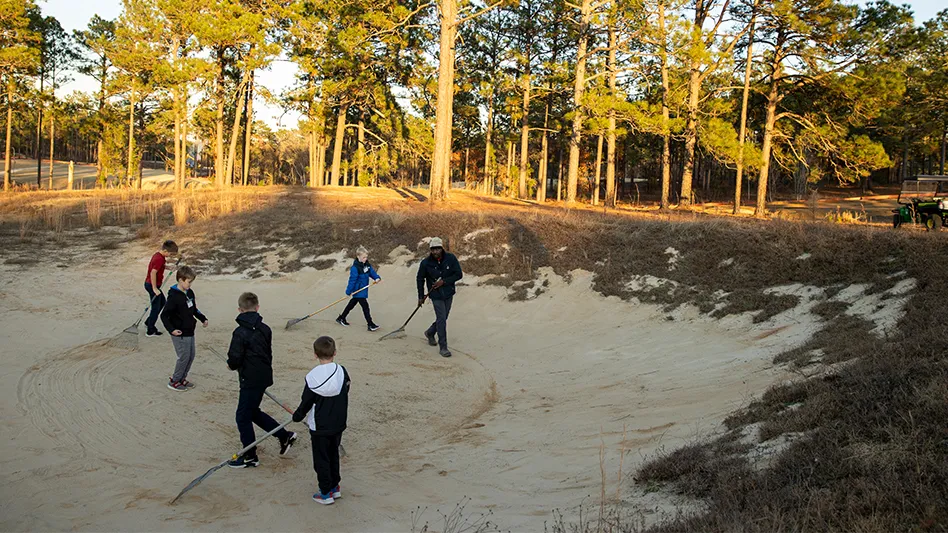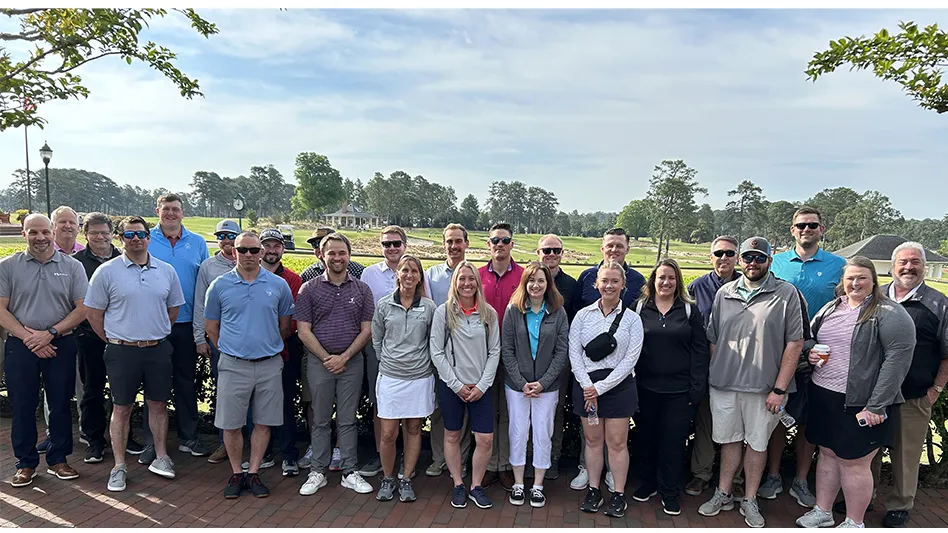 Tim Moraghan Tim Moraghan |
Smart minds have been saying for years that “water is the new oil,” and that water use—already a critical issue to the future of golf—is only going to grow in importance. In an attempt to address the issue, the USGA, with the support of the GCSAA, held a “Water Summit” last fall, billing it as a fact-finding and exploratory meeting and a chance for key stakeholders to meet and exchange ideas. These organizations are hardly the first to worry about water. Peter McDonough, golf course superintendent at The Keswick Club in Charlottesville, Va., has been at the forefront of water management for years. Working closely with various stakeholders in his state, he led a successful effort to get Virginia to adopt break-through procedures and protocols. Working on behalf of his local superintendents association, McDonough and his committee were able to create best practices manual, communicate with constituents, and gain recognition from the Virginia legislature and influence Chesapeake Bay legislation. That’s a great start. But if the other local associations don’t start showing the same sort of initiative, water legislation will be forced on the golf industry whether we like it or not. Before we do anything else, those of us fighting for our piece of the water pie must realize that golf is only one faction relying on this valuable resource. And not only is golf not the most important game in town, most people are less interested in giving us more water than they are curious to know what golf can do to help preserve and extend the limited amount of water we have. Who are we competing with? Any profession involved in growing turf is dependent on water (landscapers, other sports, nurseries, etc.). Now consider agriculture, livestock, utilities, vineyards, and other heavy water consumers, to say nothing of real estate, car washes, and all kinds of manufacturing. Everyone needs water. All the more reason that McDonough is a good example for the rest of us to follow. I recently asked him for some tips in setting up water management strategies and best management practices. His suggestions started with one caution: Water management is not an overnight process but takes years to implement.
But don’t get involved with regulatory agencies unless you are armed with the most accurate information. States can and will estimate numbers if your facts aren’t correct, and they’ll make decisions not in your favor. Success begins locally and moves up the line, eventually reaching the state and even the federal level. If you don’t know how politics works in your area, hire someone who does know. In Virginia, McDonough’s group works closely with a consultant who knows the ropes, is a lobbyist and could coordinate efforts with other agencies. “Before I started down this path I wasn’t aware of the different needs of other entities that have a stake in the water game, from car washes to construction,” McDonough said. “I also learned the art and protocol of governmental procedure, extent of the involvement of government regulators, who are very different from legislators. Know how legislators make policy, and regulators implement and monitor the results of the decisions.” McDonough stressed that because golf can’t exist without water, the industry must make a commitment to the long haul. Be patient and know that progress, especially in politics, takes time. But stick with it. Your decisions and participation can have significant effect on golf now and into the future. But golf won’t have a future without your help. |

Explore the January 2013 Issue
Check out more from this issue and find you next story to read.
Latest from Golf Course Industry
- USGA opens Golf House Pinehurst
- Bernhard Academy expands leadership team
- Another record year for research
- The Highlands pays more homage to Ross
- Audubon International adds veteran superintendent to leadership team
- South Florida simmer
- Devising safer landings
- SiteOne adds Durentis to product offerings





